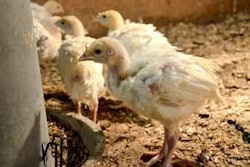The following is an opinion piece by Thomas Super, vice president of communications for the National Chicken Council
A tournament as defined by Merriam-Webster is a series of games or contests that make up a single unit of competition, the championship playoffs of a league or conference, or an invitational event. Exactly what the NCAA Men’s Division I Basketball Championship is.
Exactly what the current growout structure of the U.S. broiler industry is not.
Under the current performance-based incentive structure, growers typically are compensated based on the quality of feed efficiency, low condemnations and the quantity of liveweight pounds delivered to the processing plant. This is not a “tournament” — it is a performance-based structure that aligns with fundamental free market principles to encourage efficiency and improve performance.
Thus, two growers that produce the same “type and kind” of poultry might receive different compensation depending on their productivity and efficiency. Growers with more advanced facilities/processes and management skills will likely produce poultry more efficiently and of a higher quality. These growers are rewarded accordingly through greater compensation.
The current system has worked well for decades since the vertically integrated structure of the broiler industry was adopted. Tens of thousands of families on small farms who otherwise would have had to get out of agriculture altogether have been able to not just survive, but thrive. Most companies have waiting lists of people who want to become growers and lists of existing farmers who want to add capacity by building more growout houses. They understand raising chickens under contract can be rewarding while risks are more manageable.
If all poultry growers of the same bird type must receive the same base pay, as some argue, farmers who made greater investments in their facilities and processes might not be compensated accordingly, ensuring that the best and most innovative growers are not rewarded for being so. Progressive growers who invested more of their time and resources in their housing or growers with new construction built at a greater cost than older houses would nonetheless get the same base pay as growers with older housing and growers who chose to devote their time and effort elsewhere.
Although these growers could be compensated above the base pay rate, most, if not all, poultry dealers will be unlikely to provide premium compensation due to the administrative burdens and potential for litigation. This would likely result in a disincentive for innovation, modernization and upgrading of houses. In time, payment without regard to factors such as type or age of housing could result in lower quality, more expensive chickens and decreased food safety as a result of the lack of improvements. There would be a strong trend toward company-owned housing; a trend neither grower nor companies prefer.
This brings to mind another sports analogy. Say two players are vying for a new contract in Major League Baseball. Player A has invested in more off-season workouts, a new hitting coach and increased time watching game film, which resulted in a season hitting .314, with 25 homeruns and 100 runs batted in. Player B coasts through the off-season, is happy with the status quo and bats .269, with 10 homeruns and 60 runs batted in. Which player should receive the better contract?
There is, however, one similarity between the NCAA Tournament and the broiler industry’s performance based incentive system: they both allow viewers and consumers the opportunity to enjoy a consistent, high-quality product at a very favorable value. In a tournament like the NCAA’s, though, there is only one actual winner. In the performance-based incentive system of growing chickens, there are hundreds of millions of winners: consumers, at home and abroad.

















